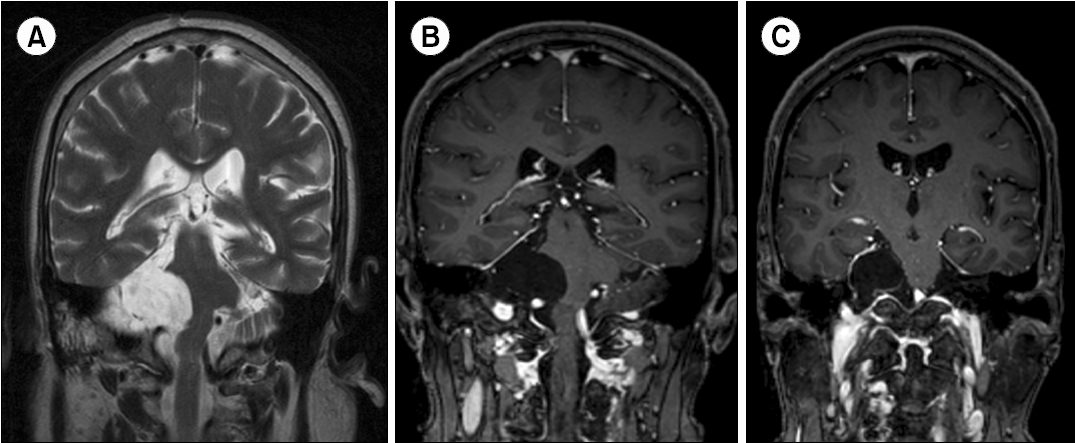Articles
- Page Path
- HOME > Res Vestib Sci > Volume 22(2); 2023 > Article
-
Video Report
소뇌교뇌각 신경초종을 동반한 Brun 안진 -
홍슬기, 박지윤
 , 최승진, 김민지
, 최승진, 김민지 - Brun’s Nystagmus with Cerebellopontine Angle Schwannoma
-
Seulgi Hong, Ji-Yun Park
 , Seungjin Choi, Min Jee Kim
, Seungjin Choi, Min Jee Kim -
Research in Vestibular Science 2023;22(2):57-58.
DOI: https://doi.org/10.21790/rvs.2023.22.2.57
Published online: June 15, 2023
Department of Neurology, Ulsan University Hospital, Ulsan University College of Medicine, Ulsan, Korea
- Corresponding Author: Ji-Yun Park Department of Neurology, Ulsan University Hospital, Ulsan University College of Medicine, 877 Bangeojinsunhwando-ro, Dong-gu, Ulsan 44033, Korea Tel: +82-32-621-6475, Fax: +82-52-250-7088, E-mail: lullu21@hanmail.net; bingbing@uuh.ulsan.kr
Copyright © 2023 by The Korean Balance Society.
This is an open access article distributed under the terms of the Creative Commons Attribution Non-Commercial License (http://creativecommons.org/licenses/by-nc/4.0) which permits unrestricted non-commercial use, distribution, and reproduction in any medium, provided the original work is properly cited.
- 1,317 Views
- 39 Download
-
CONFLICT OF INTEREST
Ji-Yun Park is the Editor-in-Chief of Research in Vestibular Science and was not involved in the review process of this article. All authors have no other conflicts of interest to declare.
-
FUNDING/SUPPORT
None.
-
AUTHOR CONTRIBUTIONS
Conceptualization: SGH, JYP; Data curation: SGH; Formal analysis: SGH, JYP; Investigation: SGH; Methodology: JYP; Project administration: SJC, MJK; Supervision : SGH, JYP; Visualization: SJC, MJK; Writing–Original Draft: SGH, JYP; Writing–Review & Editing: All authors.
All authors read and approved the final manuscript.
ARTICLE INFORMATION
SUPPLEMENTARY MATERIALS

- 1. Leigh RJ, Zee D S. The neurology of eye movements. 5th ed. Oxford (UK): Oxford University Press; 2015.
- 2. Mantokoudis G, Korda A, Zee D S, Zamaro E, Sauter TC, Wagner F, et al. Bruns' nystagmus revisited: a sign of stroke in patients with the acute vestibular syndrome. Eur J Neurol 2021;28:2971–9.ArticlePubMedPMCPDF
REFERENCES
Figure & Data
References
Citations


 KBS
KBS
 PubReader
PubReader ePub Link
ePub Link Cite
Cite


